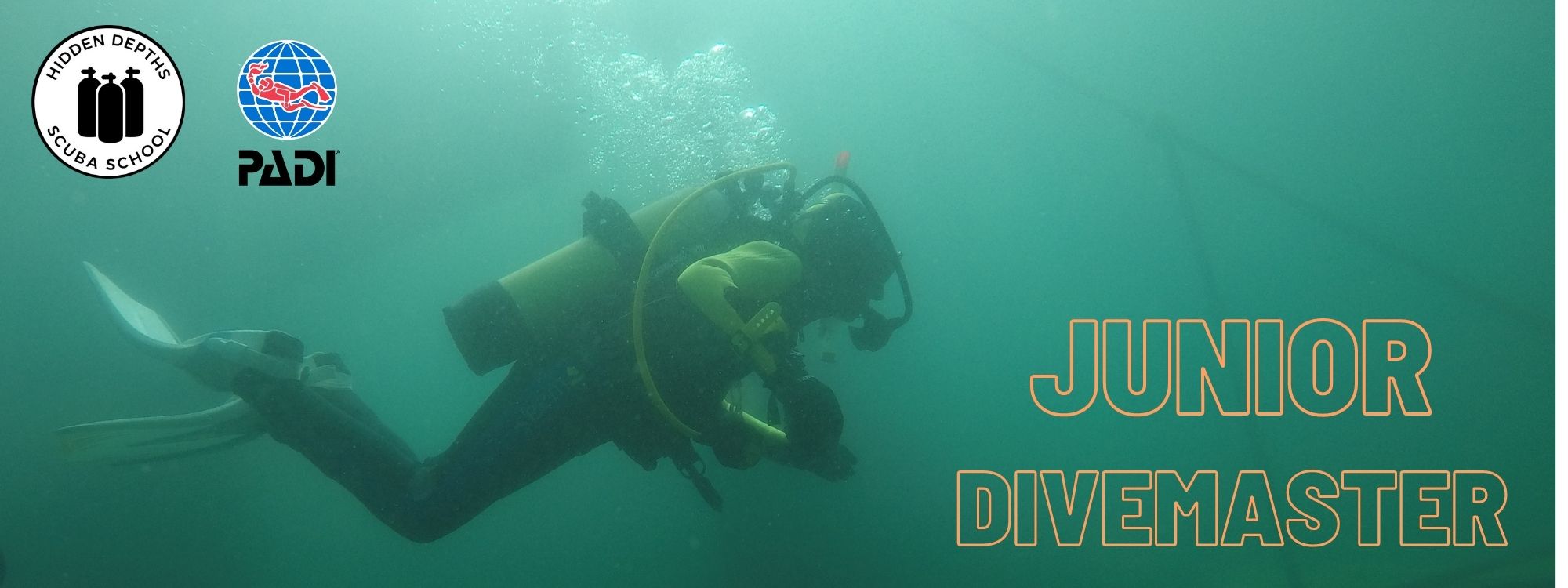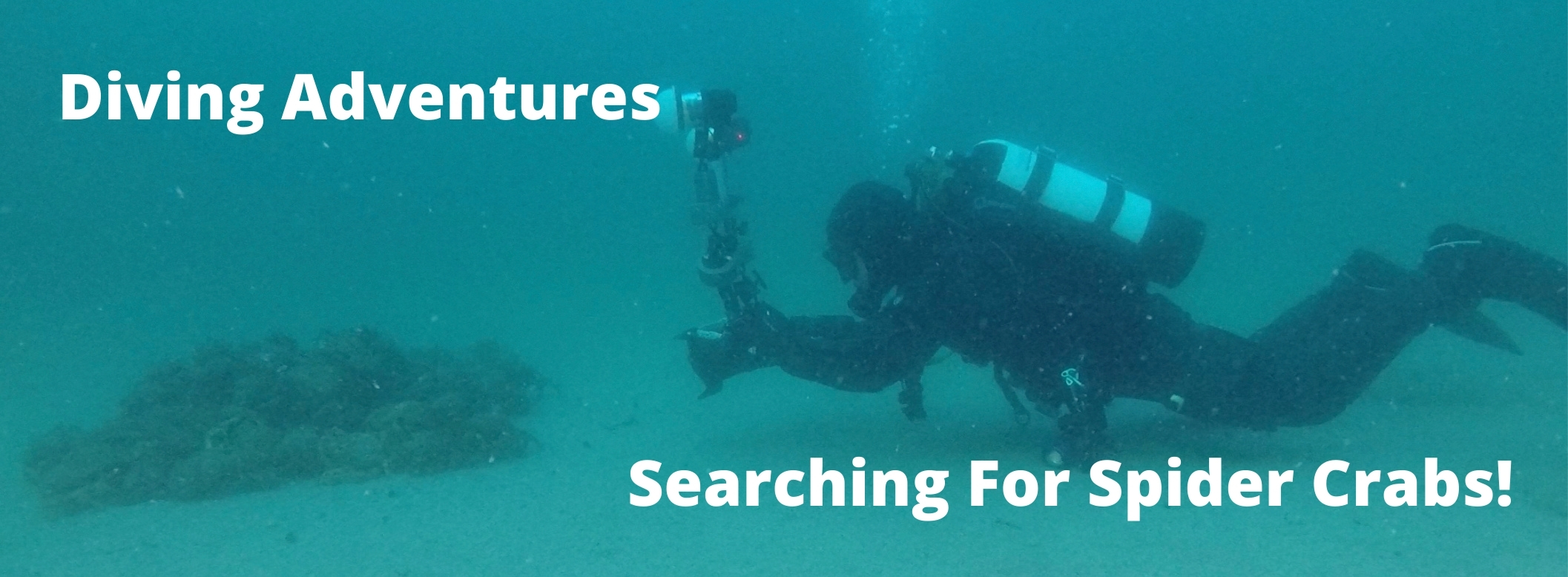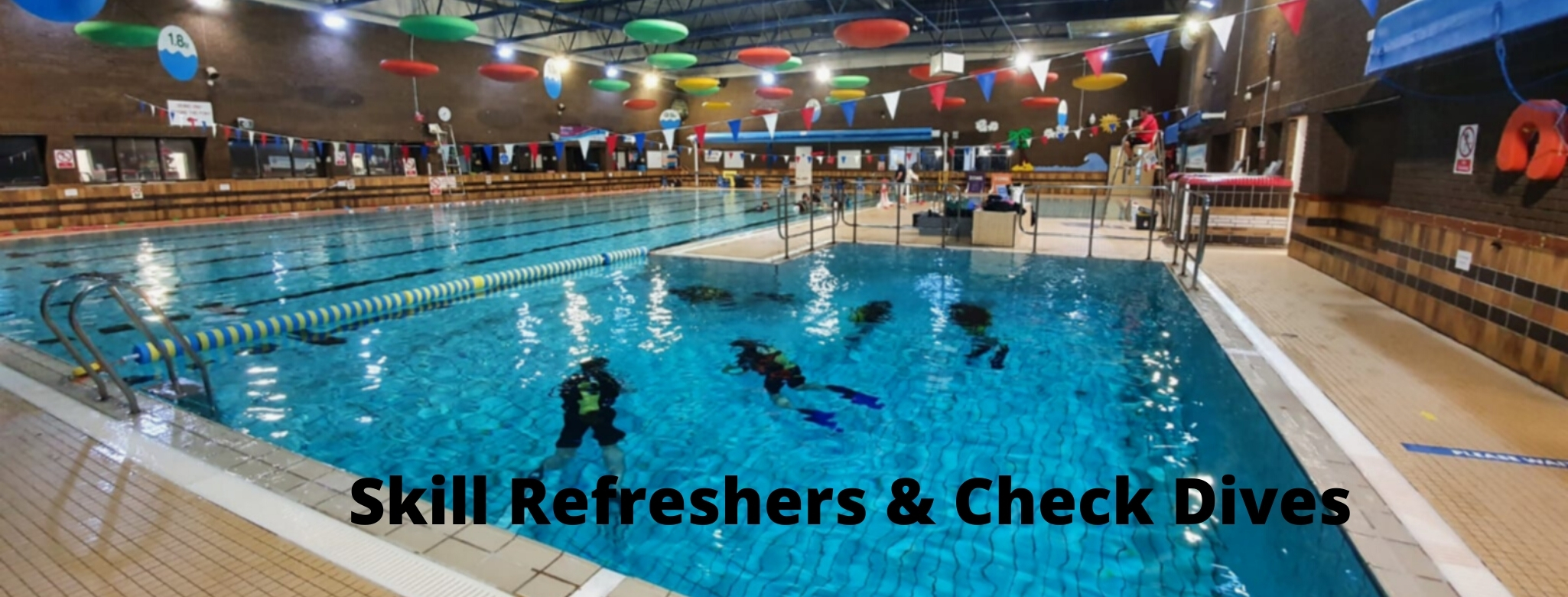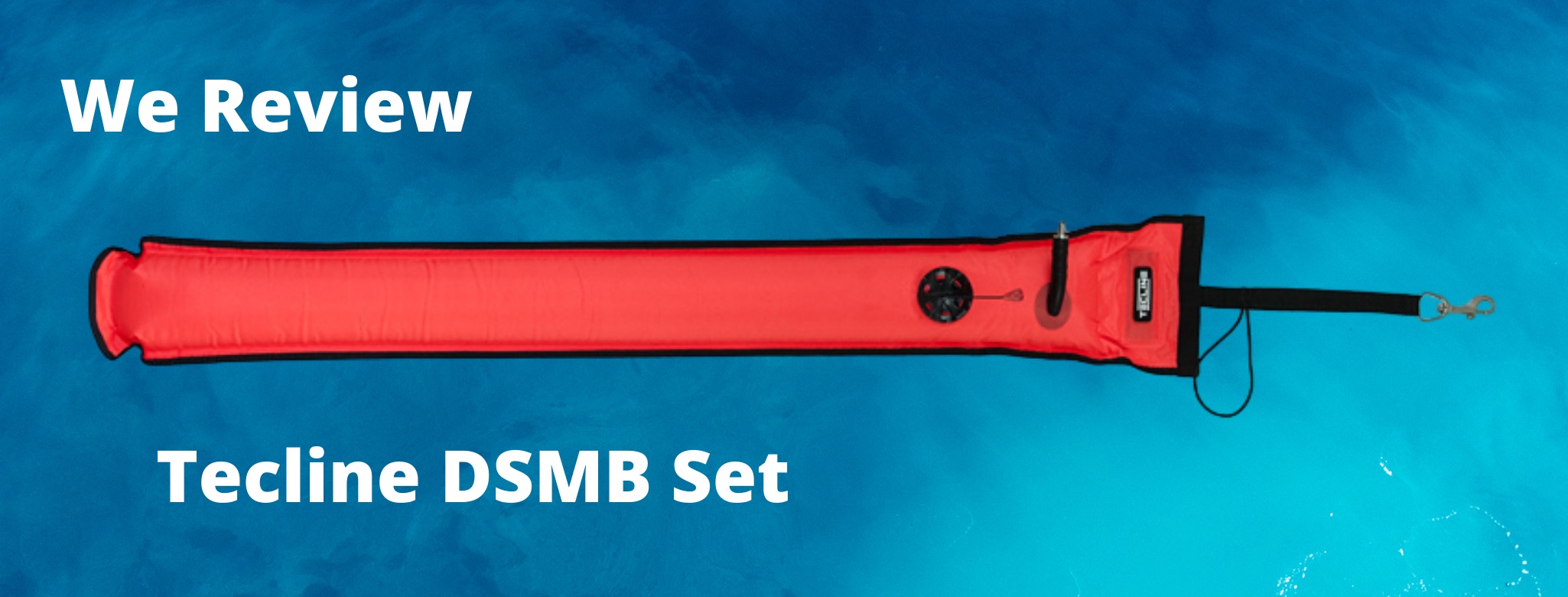Diving Inventory - What, When & Why
We are often asked what items a diver needs to take with them on a dive, which they can hire and which they should be considering owning themselves, especially in UK coastal dives. Whereas much of the equipment can be rented, many other important items are not commonly available for hire. Hence, there are some items that you may consider buying at a relatively early stage in your diving ventures.
Note that the following information and suggested items are a guide. There is no substitute for making good quality informed decisions, considering local knowledge and practices, ideally a local orientation, your own preparedness to dive (physical, mental, training, experience, competence and comfort) and safe diving practices. Just because something may be local practice, does not ensure it’s appropriate nor safe.
Practising and orientation with any new or unfamiliar equipment are ideally carried out in controlled conditions such as a swimming pool or if in open water, in a controlled environment such as an inland training facility. At HDSS we’re pleased to organise training and orientation dives for anyone wishing to master a new skill, try out new equipment or simply improve confidence and competence through practice.
Continuing to develop your experience through continuing education and gaining experience in less challenging conditions will better prepare you for a variety of diving adventures. Certainly, irrespective of local practices, peer pressure or any desire to “push the boundaries”, you should always dive within the parameters of not only your training but your experience.
Over time and especially owning your own equipment, diving will become increasingly comfortable and enjoyable and the familiarity and fit of your own equipment adds to the quality of your diving experiences. Most divers who dive frequently will ultimately aim to have a complete set of their own equipment for diving. Diving at different times of year and in different environments can mean that you may need to be able to access multiple variations of setup. Exposure protection is the main example of this. Most of the staff team will own a range of exposure protection, ranging from a drysuit with undersuits to suit winter to summer diving, full wetsuits to thinner (3mm) “shorty” wetsuits for those trips to warmer waters.
Here I will shed some light on both minimum and recommended equipment to be taken on every dive and the reasons why. It will also give some insight into which items you may consider purchasing and which can be more easily rented or loaned. It’s a personal decision as to whether you buy or aim to rent/borrow for your diving of course. However, there are certain items which are either very strongly recommended or even mandatory for certain UK dives. More on this later.
Obtaining suitable equipment, within your budget and to suit the type of diving activities you are planning to engage in the short and medium term can be a little daunting. Advice and information before you buy and ideally trying the item are important. HDSS staff are always willing to provide information to help you select a suitable product for you.
We would certainly recommend that before venturing off on a dive, whether it be in the UK or overseas, you check with the trip or dive organiser what is or can be provided in the way of equipment, what is required and ensure you’re properly prepared. Your dive plan should include not only the logistics of getting there and back, your personal (physical, mental and experience) preparedness and suitability for diving but also the equipment you will require for the dive.
I make several references throughout to the type of diving you’re planning on doing. Here I’m largely referring to whether your diving will be largely in UK (cold/cool waters), largely in sub-tropical and tropical (warm) environments or a combination of both. Also, are you thinking of progressing significantly beyond Open Water level and perhaps evolve towards technical diving involving more challenging dive sites, below 30m, into Enriched Air and even diving involving decompression. Significant experience and additional training is needed to safely undertake this style of diving and as your diving evolves, so will the requirements you have for your equipment.
MASK AND BACKUP MASK
A mask is a very personal item. Comfort and fit are paramount to enjoy diving and this is best assured by trying and finding a mask that best suits and fits you. On club trips, they can be loaned from Hidden Depths and possibly rented from some inland dive sites and dive schools on the coast. For overseas diving adventures, you’ll likely be able to rent a mask but having your own mask will ensure you have one that fits and is comfortable and you may even have the opportunity to snorkel in whilst travelling. In addition, it’s a small and relatively light item to pack. We recommended that a spare mask is carried on you when diving, and if you venture into more technical diving, it ’s requirement. Most of the staff team will own at least two masks for personal use.
SNORKEL
You will be taught to use a snorkel on your Open Water course and it’s recommended to carry one on each dive. For holidays where between dive snorkelling is possible, having one of your own gives you the flexibility to explore local snorkelling without having to rent from the local resort outlets.
FINS
There are fundamentally two styles of fins; one designed to slip onto a barefoot (full foot pocket) for warm water diving and the other to fit over a wetsuit or drysuit boot (open heel) which have a strap for around the heel. Within this and especially for open pocketed fins there is a tremendous range from lightweight, flexible fins to heavier stiff fins. We would certainly recommend getting advice and even trying out some different styles to find what suits you, the type of diving you’re planning to do and the exposure protection you’ll be using before buying. Staff members and regular may well own several different fins for different environments.
EXPOSURE PROTECTION; SUIT, HOOD, GLOVES, BOOTS
Each individual will have a different susceptibility to cold. However, irrespective of where and in what water temperature you dive in, your body will lose heat to the environment. Exposure protection merely slows the rate of heat loss but does not halt it. Continuing a dive when cold can be both uncomfortable and potentially dangerous so ensuring you’re warm enough to comfortably complete your planned dive is an important part of dive planning.
Diving in cold water (much of the year in the UK for example) generally requires a drysuit to ensure you’re comfortable, especially on longer dives. Some hardy souls can be seen diving in winter months in wetsuits though none of our staff team would recommend it. All the staff team at HDSS dive year-round in the UK using drysuits, varying the undergarments to suit the water temperature, dive time and the number of dives in a day. Heat loss is cumulative so if you’re feeling slightly cold on the first dive, you’ll generally feel colder on second or subsequent dives. There are different materials, styles and options for drysuits so obtaining advise before purchase is certainly a good idea. You’ll also need to be certified through a course as “Dry Suit Diver” which HDSS can deliver.
For diving in warmer and tropical environments, it’s a personal choice. I tend to use a 3mm shorty and a 3mm under a vest for 27-28°C water temperatures or even a full 3mm or thicker suit and you will find dive staff in those environments using 3mm to 5mm full suits. Over time, many divers will collect a range of wetsuits to be able to adapt to different dive sites and a drysuit for cold water diving.
A high proportion of body heat is lost through the head. A hood is essential for cool and cold-water diving and optional as water temperatures increase. Personally, I use a hood for anything below about 24°C water temperature. Other people’s tolerance will differ. For UK winter, spring and some autumn diving, most of us at HDSS will be using a 10mm neoprene hood, using progressively thinner hoods as water temperatures increase, seldom if ever less than 5mm and generally no less than 7mm in the UK.
Gloves are generally required in the UK and with the exception of some hardy types, most will be wearing gloves year-round. The staff team generally have dry gloves integrated as part of their drysuits with some of the staff using wetsuit gloves. Hands will generally be cold in winter with either option and cold hands will reduce your dexterity as well as being uncomfortable. Many overseas destinations would not necessitate gloves and some even prohibit gloves. Personally, I tend to use gloves when water temperatures dip below around 21°C.
SCUBA UNIT – BUOYANCY COMPENSATING DEVICE (BCD), REGULATORS AND CYLINDER
For experienced divers, owning their own complete set of equipment becomes essential to their enjoyment of the diving. However, it’s also true that most dive resort locations will rent out a complete set. Personally, I do not travel anywhere where diving is on the agenda without bringing my own BCD and regulators (as well as everything else other than cylinder and weight). Many divers have a range of different sets to suit the location, environment and style of diving. Some of our staff team, however, will generally rent equipment whilst on overseas holidays. Again, obtaining advice on suitable styles of BCD, in particular, is recommended before purchasing, ensuring that it will suit the nature of the diving you’re planning. Some BCDs are designed specifically for warmer climates, having perhaps less lift (max buoyancy). Others may be minimalist to reduce weight for travel and some are specifically targeted for colder water diving.
Travelling overseas with cylinders and weights (unless driving there) is clearly impracticable and even on holidays where you are using your own equipment, it would be normal to rent cylinders and weights (including weight belts if required).
If you’re planning on doing an amount of diving in the UK, owning your own cylinders and weights suitable for the style of diving you’re doing is ultimately recommended, especially if your preference is an unusual size of cylinder. Common cylinder sizes to rent are in the 10 to 12-litre range. Larger or smaller cylinders can be more difficult to rent/loan from some locations. Also if you’re planning to dive Nitrox (EANx), having your own cylinders will ensure you have the right gas mix for your personal preference.
WEIGHTS
If you are buying or already have your own BCD, it may well be a weight integrated unit (weights are carried in pockets which are integral, i.e., part of the BCD.) You may well want to acquire your own lead weights for this. If the BCD you’re using is not weight integrated, you’ll need a weight belt. Overseas, generally, all locations offering diving will provide weights and belts where required.
COMPUTER
Computers, once viewed as an expensive option, are almost universally standard SCUBA equipment on every dive for the vast majority of divers. Many diver operators overseas renting customers “full kit” will include a computer in this. A computer is a quite personal piece of equipment and should not be used by another diver until both the diver and the computer have fully cleared their dive history, generally implying 18-24 hours after the last immersion of either the diver using it or the computer on its previous use. Each diver must have their own computer and cannot rely on their buddy’s computer. Good entry level computers that will serve most recreational divers very well start at below £200. We certainly recommend owning your own computer.
OPTIONAL AND ESSENTIAL ACCESSORIES
Many of the following items are often considered optional extras and accessories. However, depending on the dive site and conditions may well be essential, even mandatory.
DSMB; Delayed Surface Marker Buoy – and Backup
A DSMB is essential for UK sea diving. Its purpose is to mark the diver’s position prior to ascent. This ensures that the boat skipper can track divers in the water and other boat traffic can stay away from the divers and avoid collision/accident.
In the UK, boat skippers almost always will require that each buddy team ascends under a DSMB unless ascending on a shot/anchor line from the dive site. The latter is not always possible and out of the question on drift dives. In the event of buddy team separation, each part of the team will require a DSMB to be deployed. This can mean in some situations of diver separation that every individual team member sends up a DSMB. On drift dives, boat skippers generally require each buddy team to deploy a DSMB at the start of the dive, so they can follow the diver’s positions during the dive and be ready to pick them up when they surface. It would be irresponsible to descend for a dive without each diver having at least one DSMB, boat skippers may even refuse to allow a diver entry to the water without a DSMB and spool. It’s strongly recommended that a backup DSMB and spool is carried by each diver too. The spool should ideally contain around 20% more line than the maximum depth of the dive and especially for drift dives, the DSMB will need to reach the surface from the maximum depth. Even on shore dives into the sea, a DSMB is required in case of disorientation and/or drifting into sea lanes to ensure surfacing diver is not hit by surface craft. Surface craft can and do approach surprisingly close to shore and diver access points.
Overseas in many locations, DSMB deployment is standard practice to ensure dive boat skipper can both track and see you as well as ensuring other surface craft stay clear of surfacing divers.
There are some variations in DSMBs, both in terms of size and options for inflating. Inflation can be via exhaust gas from your regulator or from a low-pressure hose nipple, generally filled using your dry-suit hose. Spools also come in different designs, sizes and with varying line lengths. The most versatile would be a line with around 20% more line than the maximum depth you plan to dive to. The HDSS staff team are happy to advise on models suitable for you and HDSS also sell a DSMB and 35m spool which will serve in most conditions.
DSMB deployment is an essential skill that’s well worth practising regularly to ensure competence and confidence in deployment. Through HDSS, you can also enrol in a PADI DSMB Distinctive Speciality course to help you acquire and practice the skills required for successful and trouble-free deployment, especially to ensure you’re prepared to do this on your own if required.
Torch and Backup
A torch is essential for UK diving in almost all conditions. At depth, surface turbidity (sediment / plankton / algae) can filter andultimately cut out significant light so that diving without a torch can become both non-enjoyable and potentially dangerous. Additionally, the torch aids in keeping you visible to your dive buddy team and visa versa to reduce the risk of diver separation. Finally, it is a signalling device to communicate with your buddy team, to attract attention, signal OK, indicate a direction and so on.
There is a significant range of torch styles, sizes and manufacturers on the market. Choosing torch(es) appropriate for your style of diving and budget can be challenging. HDSS staff are happy to offer information to help you make a suitable selection.
For UK diving, generally, a narrow beam is preferred (less than 10 degrees). Wider beams tend to backscatter on in-water particles and generally have less penetration, both for signalling and for illuminating objects. Wider beams are suitable for illuminating areas of interest in clearer waters as well as for video and photography.
Unsurprisingly perhaps, a backup torch is strongly recommended. As with almost all things SCUBA, we are aiming to have contingency/backup in the event of a problem. Torches can fail, flood and batteries do run out.
Cutting Devices
Carrying an effective cutting device is essential in almost any style of diving. Most commonly they might be used for removing fishing line and other relatively light entanglements. In an emergency, they might be used to speed/aid removal of BCD harnesses and other items attached with webbing. Strongly recommended is to carry two cutting devices.
If only carrying a single cutting device, it should be mounted so that it can be reached by both/either hand. The most common types are, knife, line cutter and scissors/shears.
Experienced UK divers including HDSS team members invariably carry two cutting devices, a line cutter on their right wrist and a second most commonly on their weight/harness belt. HDSS staff are happy to provide information to assist you in purchasing and locating your own cutting devices.
Surface Signalling Device
Commonly found supplied with and mounted to the Low-Pressure inflator hose of BCDs, a whistle is an important item of safety equipment. Divers should not take for granted that a whistle will be supplied with rented BCDs from any dive establishment and should both check this prior to diving and ensure that they have one.
Written by Robin, PADI Master Scuba Diver Trainer
First Published - 2nd May 2018
Updated - 11th May 2020






